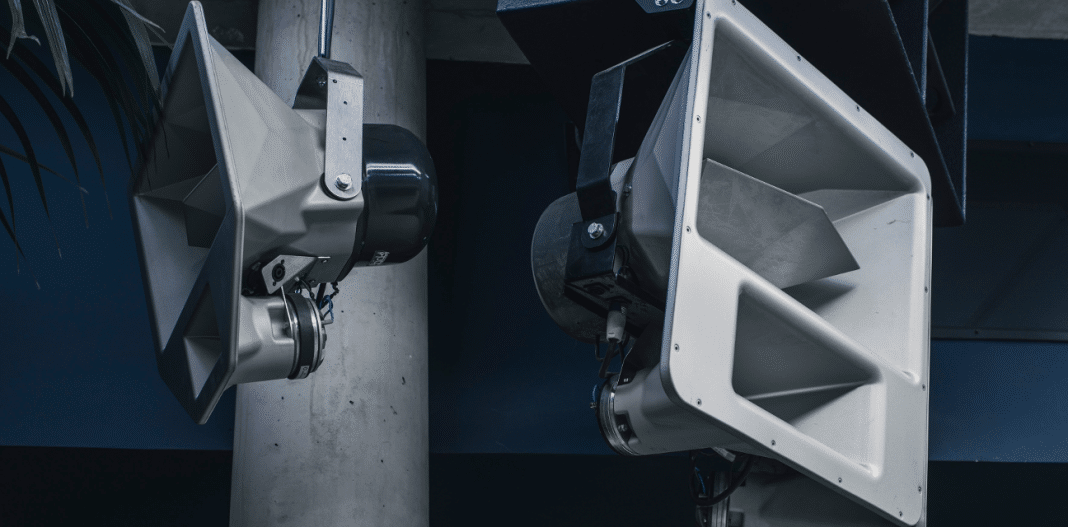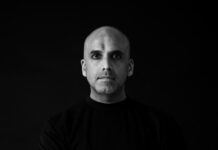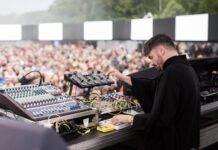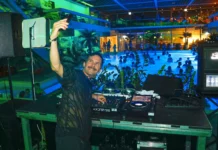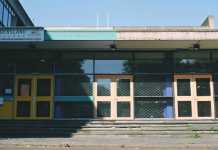Photos courtesy of Funktion-One/Timo Steenvoorden and Shelter; Translation: Anke Rumohr
Funktion-One is regarded by many as the Ferrari of sound systems, the reference for quality sound. This reputation has been achieved by a company with only 17 employees and a small workshop located in the south-English countryside. Tony Andrews will explain in this interview how they’ve managed to reach this point.
A single-lane road, surrounded by green meadows and single-family houses. The only sound that can be heard is the twittering of birds with the occasional passing of cars. We are located at the border of a small town called Dorking, a good one-hour train ride south of London.
There are barely any sights to visit here. The inhabitants are proud of a chicken species that bears the name of the municipality and also happens to be the heraldic animal of local museums. If you ask the inhabitants about the whereabouts of the Funktion-One plant you’ll only receive shrugs, even though this local professional audio manufacturer has been the provider for some of the best clubs in the world |- from Space (Ibiza) to Berghain (Berlin) to Shelter (Amsterdam). Through its tried and tested presence at these venues, the British manufacturer has come to be regarded as the standard for quality sound. Promoters will write the name of the sound system on their flyers, sometimes even bigger than the names of the DJs, because Funktion-One is a guarantee for excellence. Back in 2015, Rolling Stone even listed the company founder Tony Andrews as one of the 50 most influential people in the field of electronic dance music.
That Andrews prefers tranquility for his enterprise in his hometown becomes clear as soon as you approach Funktion-One’s headquarters. There are no signs, no hint that would indicate a company. After a picket gate there’s a gravel path that leads to a one-story brick building. Tony Andrews and his wife Ann welcome us. “A sign? No need for it. We don’t have any local customers anyway”, says the 67-year-old. “Well, ready for a small tour?”
The heart of the company is a small workshop of 30 square meters where Tony and his colleagues work on new prototypes. Boxes are piling up on racks till the ceiling, loudspeaker chassis in various shapes and sizes lie between voltage measuring devices and screwdrivers on the workbenches. Across the ceiling you find some stretched ropes onto which cables are hanging. Above the door a billboard with the words: “Dance or Walk, Funk or Die!”
In the next room carpentry can be found in the shape of Yann who has been translating ideas into working prototypes since 1979, Yann and Tony have been working on a project in there: a box case made of birch plywood. “The best material for it”, he says. On the other side of the fitting and R&D room, there is an office in which Ann takes care of the business, a warehouse for the individual parts and one for the shipping of the boxes. Altogether the headquarters of Funktion-One is 700 square meters large and employs 17 people – only one more employee since the last visit from Groove eight years ago. How is this accomplishable with the ever-growing demand for his sound systems? “I’ll be happy to explain it to you“ says Andrew, while casually rolling a cigarette. “But one thing after another”
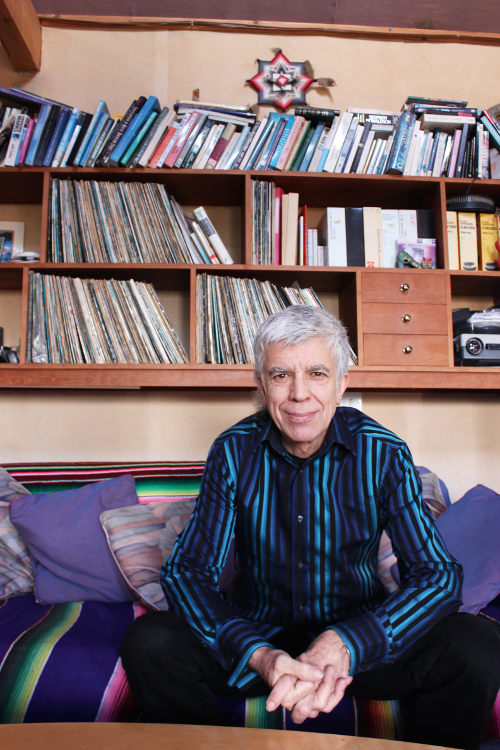
How did you end up becoming a sound system builder?
When I was a teenager I found a stereo and it felt like a revelation, it was amazing. When I closed my eyes, I could see an audio-canvas in front of me! Especially while listening to “Voodoo Chile” from Jimi Hendrix, this song has the best stereo panning. I saw him live at the Isle of Wight Festival in 1970. A great event, but I found the speakers too weak. This experience grew my interest in speakers. My idea: To build Hi-fi sound systems for concerts. And To this day I remain faithful to this vision.
What makes a good sound system?
When it feels like you’re being enveloped by a cloud of sound, when you have the feeling that the sound hits you from very closed and all the frequencies arrive simultaneously. Then you are dealing with a good sound system. People often speak of the sound of a loudspeaker, but I say: Sound doesn’t exist, there’s only the truth. While building boxes you try to eliminate distortions and falsifications. If you are able to achieve it you’re left with only the truth.
Wow, that almost sounds esoteric.
It is indeed an alchemical process. In audio, less is more. The shortest path between sound source and speakers is always the best. In the 1960s the real Hi-fi fans where not using any equalizer, that was totally frowned upon, because an equalizer falsifies the signal. Our goal is to build high quality speakers that would render the signal processor superfluous.
Are those fine differences even distinguishable amounts common mortals?
Human hearing is unbelievably precise. 2000 times more precise than the sense of sight. This is the reason why I aim to keep the sound as clean as possible. When the music in a club sounds bad it’s mostly not because of the system but because of the DJ. I spent the openings night in Space traditionally behind the mixing console. You wouldn’t imagine how many well-known DJs are mixing with awful MP3s.
We want names!
Better not. I’ll give you some names of DJs that do it particularly well in my opinion like Dave Tipper and Booka Shade. They are the best when it comes to sound quality. Dixon and Richie Hawtin are also very good. What differentiates them from many others is that they play with high quality equipment. Their productions are well recorded, clean with sharp edges.
